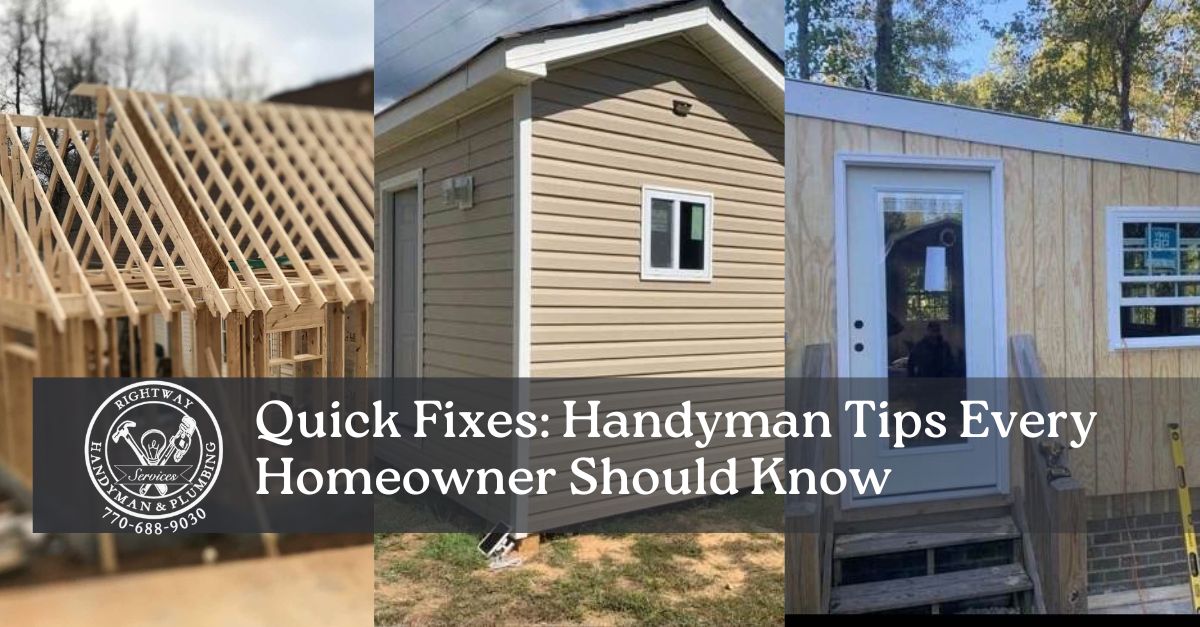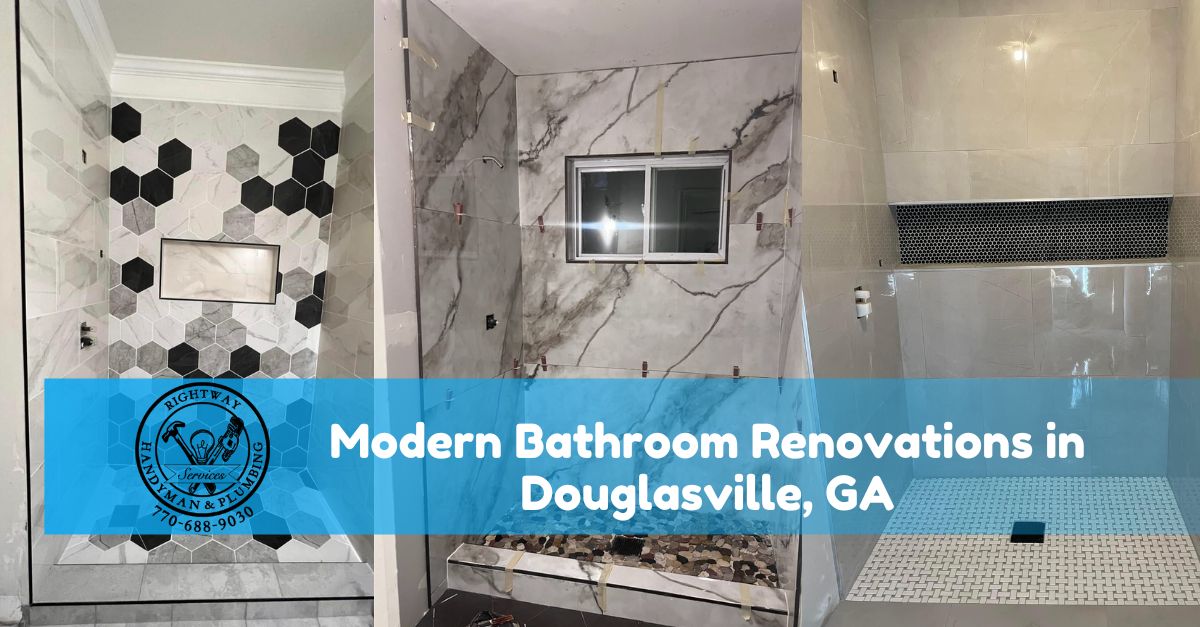
Owning a home is one of life’s biggest investments — but it also comes with endless little tasks, repairs, and surprises. While major issues like roof replacements or plumbing overhauls require professional help, there are plenty of small jobs that homeowners can handle on their own with a bit of guidance.
Knowing how to perform basic handyman Douglasville, Georgia fixes not only saves money but also keeps your home in better shape over time. Here’s a detailed guide to quick handyman tips every homeowner should know.
1. Fixing a Leaky Faucet
A leaky faucet is one of the most common household annoyances. Beyond the irritating drip sound, it can waste gallons of water over time — increasing your water bill.
How to Fix It:
- Shut off the water supply under the sink.
- Use a wrench to loosen the faucet handle.
- Inspect the washer or cartridge inside — most leaks are caused by worn-out washers.
- Replace the washer or cartridge and reassemble the faucet.
Tip: Always take the old washer or cartridge to the hardware store to find the exact replacement.
2. Patching Small Holes in Drywall
Whether it’s from nails, screws, or accidental bumps, small holes in drywall make walls look worn and neglected. Fortunately, patching them is simple and requires minimal tools.
How to Fix It:
- Clean the area around the hole.
- Apply spackle or lightweight wall filler using a putty knife.
- Smooth it out and let it dry.
- Sand lightly and paint over the patch for a flawless finish.
Tip: For larger holes (over 1/2 inch), use a drywall patch kit for stronger coverage.
3. Unclogging a Slow or Blocked Drain
A slow drain is often caused by hair, soap scum, or debris build-up. If left untreated, it can become a major blockage.
Quick Fixes You Can Try:
- Use a drain snake or clog remover tool to fish out debris.
- Pour 1/2 cup of baking soda followed by 1/2 cup vinegar into the drain, wait 10 minutes, then flush with boiling water.
Tip: Avoid using harsh chemical drain cleaners — they can damage your pipes over time.
4. Silencing Squeaky Doors and Cabinets
That squeaky hinge may seem minor, but it can become an everyday annoyance.
How to Fix It:
- Apply a small amount of WD-40, silicone spray, or even petroleum jelly to the hinge.
- Open and close the door a few times to work the lubricant into the hinge.
Tip: If squeak persists, remove the hinge pin, clean it, lubricate, and reinstall.
5. Tightening Loose Cabinet Handles and Knobs
Loose handles and knobs make your kitchen or bathroom look unkempt and may even fall off.
How to Fix It:
- Use a screwdriver to tighten the screw behind the knob or handle.
- If the screw keeps loosening, apply a drop of thread-locking adhesive before tightening.
6. Replacing Old or Cracked Caulking
Caulking seals gaps and prevents water damage around sinks, bathtubs, and windows. Over time, it can crack or mold, leading to leaks.
How to Replace Caulk:
- Remove old caulk with a caulk remover tool or utility knife.
- Clean the area and let it dry completely.
- Apply a smooth bead of fresh caulk and smooth it with your finger or a caulk tool.
Tip: Use waterproof, mold-resistant caulk for bathrooms and kitchens.
7. Resetting a Tripped Circuit Breaker
If an appliance suddenly stops working, a tripped breaker could be the cause.
How to Reset It:
- Locate your breaker panel (usually in the garage, basement, or utility area).
- Look for the breaker in the “off” or middle position.
- Flip it all the way off, then back on.
Tip: If the breaker trips repeatedly, unplug devices on that circuit and call an electrician — it may indicate a wiring problem.
8. Replacing Smoke Detector Batteries
A chirping smoke detector is a warning you shouldn’t ignore. Smoke alarms save lives, so keeping them operational is a must.
How to Replace Batteries:
- Twist off the smoke detector cover.
- Remove old batteries and replace with fresh ones.
- Press the “test” button to ensure it’s working.
Tip: Change batteries every 6-12 months, even if the detector isn’t chirping.
9. Fixing a Running Toilet
A constantly running toilet wastes water and raises your bill. Usually, the problem is a faulty flapper or float.
How to Fix It:
- Open the toilet tank lid.
- Check if the flapper is sealing properly.
- If it’s worn or warped, replace it (flappers are inexpensive and available at hardware stores).
- Adjust the float to make sure the water stops at the right level.
10. Know When to Call a Professional
While it’s great to tackle small fixes, some problems require an expert touch — especially those involving electrical wiring, plumbing systems, structural repairs, or roofing.
Hiring a professional handyman for larger or more complex jobs ensures safety, quality, and peace of mind.
Final Thought
Learning basic handyman skills is empowering for any homeowner. With a few tools, a little practice, and these simple tips, you can handle many common household problems yourself — saving money and avoiding unnecessary stress.
But remember, there’s no shame in calling a pro when needed. Whether you need quick fixes or a full repair, having a trusted handyman on speed dial is a smart move for every homeowner.
Need help with repairs? Reach out for professional handyman services — we’re here when you need us!


